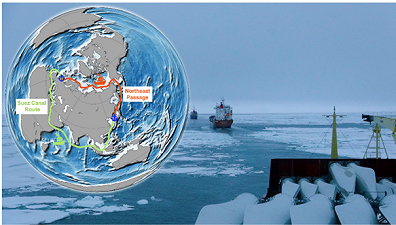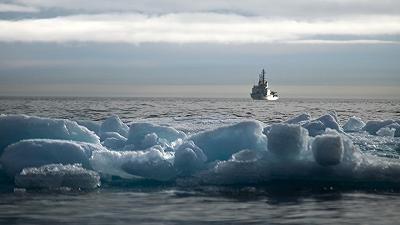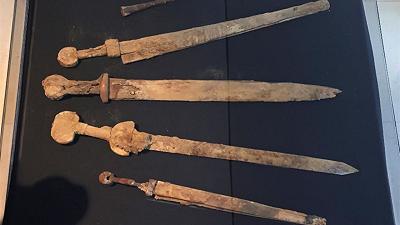[more][quote]Sustained winds can cause an event known as a wind setdown, in which water levels are temporarily lowered ([url=http://www2.ucar.edu/news/2663/parting-waters-computer-modeling-applies-physics-red-sea-escape-route]see[/url]). This animation shows how a strong east wind over the Nile Delta could have pushed water back into ancient waterways after blowing for about nine hours, exposing mud flats and possibly providing an overland escape route similar to the biblical account of the Red Sea parting.
The animation is based on results from computer modeling that arose out of a master’s thesis in atmospheric and oceanic sciences by NCAR researcher Carl Drews. The research is published in the online journal, PLoS ONE and is part of Drews’s larger research project with oceanographer Weiqing Han (University of Colorado) into the impacts of winds on water depths, including the extent to which Pacific Ocean typhoons can drive storm surges. By pinpointing a possible site south of the Mediterranean Sea for a potential Red Sea crossing, the study also could be of benefit to experts seeking to research whether such an event ever took place. (Visualization by Tim Scheitlin and Ryan McVeigh, NCAR; based on model simulations.)[/quote][/more]
[more][quote]NCAR researcher Carl Drews discusses the results of a computer modeling study that shows how a sustained wind can temporarily lower water levels ([url=http://www2.ucar.edu/news/2663/parting-waters-computer-modeling-applies-physics-red-sea-escape-route]see[/url]).
The research he describes arose out of his master’s thesis in atmospheric and oceanic sciences. The research is published in the online journal, PLoS ONE and is part of Drews’s larger research project with oceanographer Weiqing Han (University of Colorado) into the impacts of winds on water depths, including the extent to which Pacific Ocean typhoons can drive storm surges. By pinpointing a possible site south of the Mediterranean Sea for a potential Red Sea crossing, the study also could be of benefit to experts seeking to research whether such an event ever took place. (Visualization by Tim Scheitlin and Ryan McVeigh, NCAR; based on model simulations.)[/quote][/more]
Una interessante [url=http://www.plosone.org/article/info%3Adoi%2F10.1371%2Fjournal.pone.0012481]ricerca di Carl Drews e Weiqing Han[/url] dal titolo [b]”Dynamics of Wind Setdown at Suez and the Eastern Nile Delta”[/b], già citata sulla Lega [url=https://leganerd.com/2010/09/24/mose-se-ne-intendeva-di-fisica/]qui[/url], che teorizza come in determinate condizioni l’azione del vento possa spostare le acque di un bacino per realizzare un “ponte di terra” e rendere quindi possibile l’attraversamento a piedi di uno specchio d’acqua (o un tratto di mare).
Ovviamente si fa riferimento all’attraversamento del Mar Rosso da parte di [url=http://it.wikipedia.org/wiki/Mos%C3%A8]Mosè[/url] ed il popolo di Israele raccontato dalla Bibbia nel libro dell’Esodo.
Ipotesi affascinante, sebbene già altre teorie abbiano associato questo episodio biblico ad eventi meteorologici e/o legati alle maree per spiegarlo.
[url=http://www2.ucar.edu/news/2663/parting-waters-computer-modeling-applies-physics-red-sea-escape-route]Qui[/url] trovate un articolo che descrive sinteticamente la ricerca, ma i due video sopra mi sembrano comunque abbastanza comprensibili.
Nel libro dell’Esodo al versetto 14:12 si fa riferimento ad un forte vento durante la notte: la simulazione al computer realizzata da Drew e Han ha lo scopo di dimostrare come si possa essere trattato di un fenomeno noto come “wind set-down”.
Applicando le leggi fisiche ad un modello del tratto di Mar Rosso in cui si suppone Mosè abbia attraversato, con un vento pari a circa 120Km/h (63mph), quindi una tempesta tropicale di media potenza secondo l’attuale scala degli uragani, l’effetto potrebbe essere stato quello di spostare l’acqua del tratto finale del canale di Suez e di un’area lagunare ai bordi del Mediterraneo scoprendo un ponte di terra.
Carl Drew è membro del [i]Department of Atmospheric and Oceanic Sciences, University of Colorado at Boulder, Boulder, Colorado, USA[/i] (come l’oceanografo Weiqing Han) e del [i]NCAR Earth System Laboratory, National Center for Atmospheric Research, Boulder, Colorado, USA[/i]









